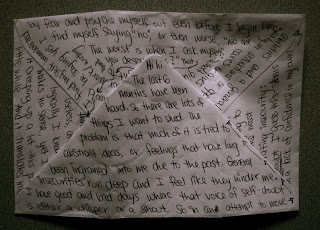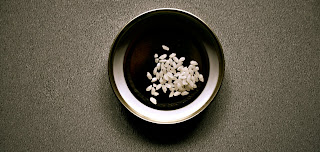02.
Hi hi. The last 6 months have been so hard, so there are lots of things I want to shed. The problem is that much of it is tied to abstract ideas, or feelings that have long been ingrained into me due to the past. General insecurities run deep and I feel like they hinder me. I have good and bad days where that voice of self-doubt is either a whisper or a shout. So in an attempt to move forward, I'm going to pick the most debilitating insecurity: self-doubt. I guess this stems from a lack of confidence in my own abilities and a general low feel of self worth. I find myself immobilized by fear and psyche myself out even before I begin. Especially in situations or opportunities where I should be saying yes. I find myself saying no, or even worse, no one cares or gives two shits about your work/writing. The worst is when i ask myself, what gives you the right to think your deserve this? That thinking is useless, and logically I don't know it makes no sense, yet I find it creeping up a lot this past little while. And it translates into my potential relationships with people. [Him. Him. Him.] Another thing I need to unburden myself from. He techno-danced on my heart. He's been gone longer than the time we spent together yet the imprint he left on me still linger. I think of him daily and wonder what I could have done differently, when in reality, it was him that had to work through the things going on inside his head. So I've got to let the little birdie, [him], out of the cage of my mind.

The grains of rice remind me of [him] because he is a Rice King. Though rice is a comfort to me and provides me nourishment, uncooked rice is also a hazard to birds and can cause their insides to explode, much like how my heart did. So cast away this rice, along with my feelings for [him].

The second item is a mini wallet I made a long time ago. It reminds me of self-doubt and the sometimes (read: often) harsh self-criticism.
Be gone, self doubt!


















